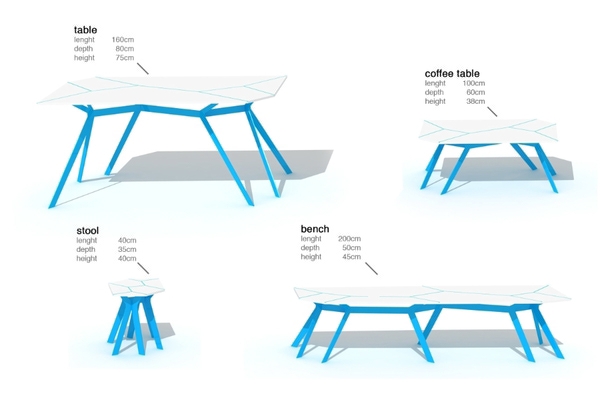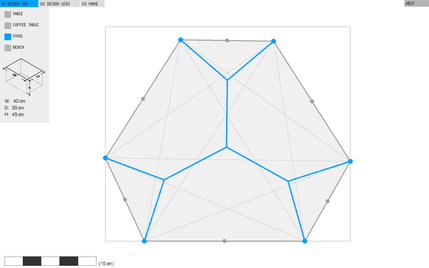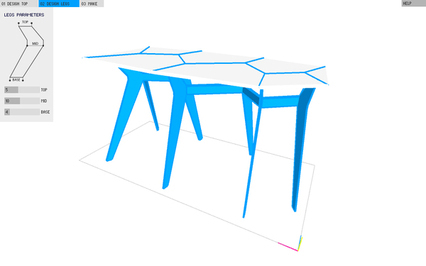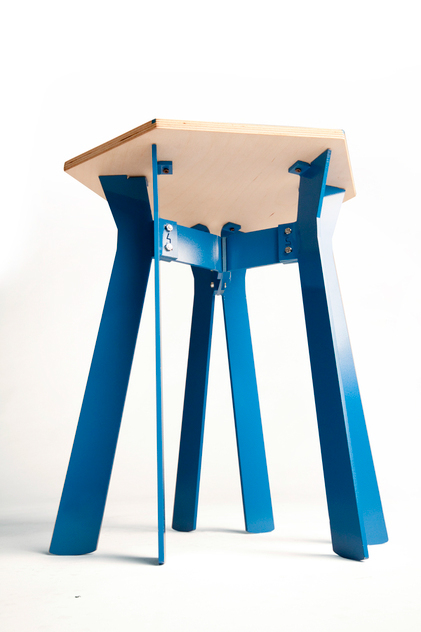THESIS PROJECT FOR MY MASTER DEGREE IN INDUSTRIAL DESIGN AT POLITECNICO OF MILAN.

The aim of the xylem project was to investigate the possibilities of digital fabrication technologies and computational design methodologies. The xylem project is neither a table, a bench or a stool; it’s a family of objects which can be co-designed by the clients, using a custom built software, to best suit their needs and tastes.The software, developed in Processing, is designed in order to allow the modification of the xylem’s shape by the users. In order to generate the table and ensure a safer use for users I’ve used three mathematical principles. The Convex Hull and the Voronoi Diagram are direct responsible for the table shape, while the physical simulator is used to guarantee a minimum border length of 15 cm.

The creative process is divided in three phases. In the first phase the user can design the top surface by dragging the control points of the shape. The resulting wire structure is based on the Voroni diagram, that guarantiees an uniform distribution of the elements in the space, and it’s both a decorative motive of the top surface and the origin of the legs. In the second step the user can check the object in a 3D space and change legs proportions. In the last step it’s possible to choose among a range of different materials and colors and place the order.


Each xylem is fabricated on demand using digital fabrication machinery. The top surface is milled and the voronoi lines filled with colored resin; legs are watercut out from 5mm thick aluminium foil and then painted.




